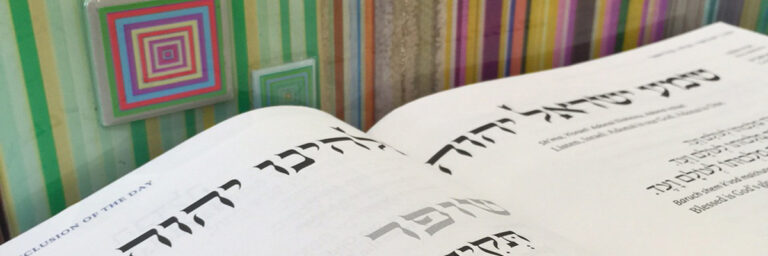
Temple Beth Sholom is honored to have received a Torah from the Memorial Scrolls Trust in London. This Torah was saved after the Holocaust and is now a valuable addition to our Torah collection. There is no accurate description from where this Torah originates, but we do know the region. According to the Jewish Museum in Prague, our scroll remains an orphan from an unknown town in Bohemia and Moravia.
We read from this special Torah twice during the year. The first time is on Yom Kippur afternoon, and the second is during our Annual Confirmation Service. For more information on the Memorial Trust, please click here.
In 1942, curators in the Central Jewish Museum in Prague, working under desperate conditions, sent out a call to the Jews in the regions of Bohemia and Moravia, Czechoslovakia, to send their Judaica and artifacts to the museum for safe keeping. The community who sent these items to the museum must have hoped that the treasures would be protected and one day be returned to their original homes. The curators, however, “must have suspected that they were inheriting the legacy of the dead…their work became an act of spiritual resistance.”[i] They thought they were saving Judaism by saving the scrolls from plunder and destruction.
Under Nazi supervision, collating under near impossible conditions, everything was cataloged meticulously. Every scroll was labeled in Czech and German, giving the name of the community and congregation from which it came. All of the museum’s curators and catalogers were eventually transported to Terezin and Auschwitz, with only one survivor. After the defeat of the Nazis, the scrolls remained for 20 years in the disused Michle Synagogue near Prague, until the communists, desperate for money, stumbled across them. The scrolls were not theirs to sell, but that hardly mattered. A philanthropist, Ralph Yablon, brought them to London. Some were rotten, torn, damaged by fire or water, nibbled by rodents – a grim testimony to the fate of the people who had once prayed with them. Inside one was a note: “Please God help us in these troubled times.”
Of the 1,564 scrolls, 216 lost their tags somewhere along their way and cannot be traced to any community. They became known as orphan scrolls.
4144 Chase Avenue, Miami Beach, FL 33140
info@tbsmb.org | 305-538-7231
Innovative School: 305-532-4756